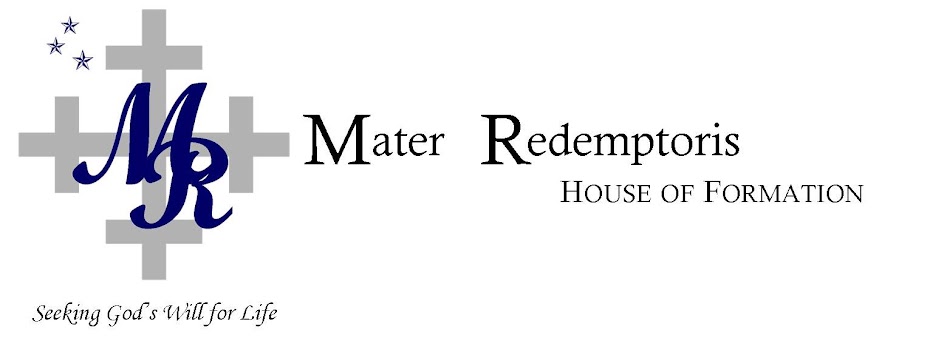In September, Mater Redemptoris House of Formation will launch a new program. It's called Spiritual Mentoring and it's for young women, busy with their lives, who want a structured means to grow in prayer and to discern their vocation.
The Spiritual Mentoring Program is designed for young women who desire to develop a spiritual life and discern a religious vocation while continuing their current activities. The program requires guided reading, prayer, direction and journaling. It is offered to women between the ages of 14 and 25 and tailored to the individual’s stage of spiritual and psychological development. For girls in high school, the program lasts until graduation. For women beyond high school, the program is limited to two years.
In collaboration with the Director of the House of Formation, the young woman sets a daily routine of prayer, reflection and study which fits her particular needs. She progresses through a course of reading and reflection, meeting regularly with the Director to discuss the materials and her reflections.
In addition to regular meetings with the Director, the young woman is also invited to participate in the daily recitation of the Divine Office at Mater Redemptoris Convent and House of Formation, to participate in the weekly Sacrament of Reconciliation offered for the Sisters and those discerning religious life, and to participate in the Sacrifice of the Mass at the House of Formation. She will also be invited to participate in vocation visits and retreat opportunities sponsored by the House of Formation.
Contact Sister M. Luka at Mater Redemptoris House of Formation for further information.
The program begins in September 2011. The cost is $60.00 for each six-month segment.
In general the program is divided into six-month units as follows. Adjustments are made as necessary for each individual.
Introduction to Prayer & Mental Prayer
Through reading, reflection and practice, the young woman will be introduced to structured prayer in the Church’s tradition and will be led to a deeper understanding of Christian prayer. She will learn the mechanics of praying the Liturgy of the Hours, the Rosary and other devotional practices. She will study the structure and meaning of the Mass and the Sacrament of Penance; the purpose, history and substance of the Divine Office; and, the interrelation of the Sacraments and Liturgy within the rich tradition of the Church’s devotional practices. The young woman will be instructed in the many practical means of mental prayer and guided in Christian meditation, lectio divina, and structured journaling. She will be led to broaden her understanding of the Rosary and other devotions. The young woman will learn to base her prayer in the firm foundation of the Scriptures.
Consecrated Life
In this period of time, the young woman will explore the history and forms of religious life. The aim is to familiarize the young woman with the possibilities of a religious vocation. The variety, aim and structure of religious congregations will be examined. She will be led through the recent documents of the Church regarding the religious vocation. She also will undertake a practical study of religious congregations, involving research and writing.
Prayer with the Saints
In this period, the young woman explores the spiritual riches of the saints. Having achieved a firm practical foundation in the life of prayer, she will begin to understand the spirituality to which she may be called. She will explore readings from Saint Benedict, Saint Dominic, Saint Francis, Saint Catherine of Siena, Saint Teresa of Avila and Saint Therese of Lisieux.
Personal Discernment
At this time, the young woman will formally discern of her vocation in life. She will examine seriously the religious life as lived in various religious congregations with the aim of seeking God’s way for her. The process will involve communication with various religious communities, prayer regarding her call in life and visits to various congregations.
The goal of this course is to come to a decision. Throughout this time, the young woman will come to a decision for her future. If she discerns a call to the religious life, the Director will assist her with the practical preparations for her next step in life.













